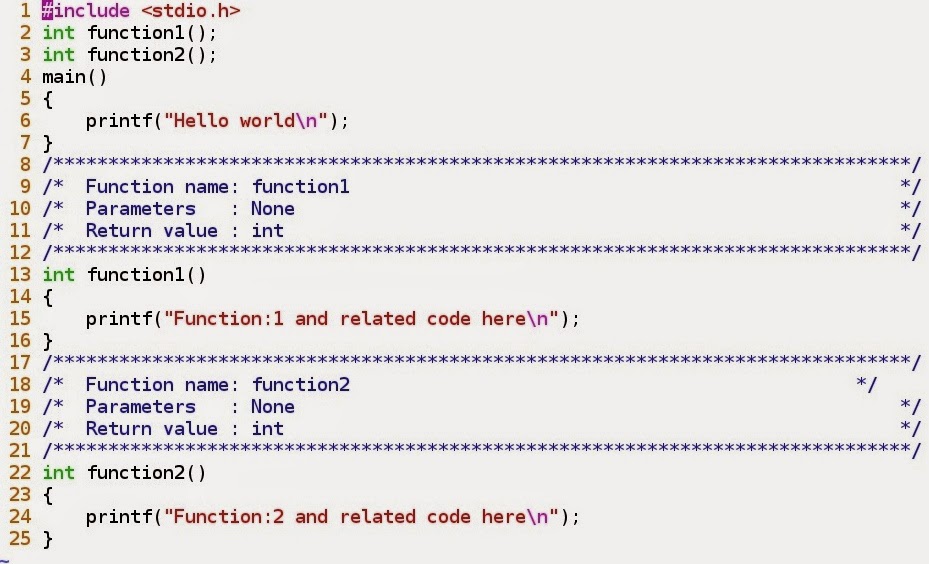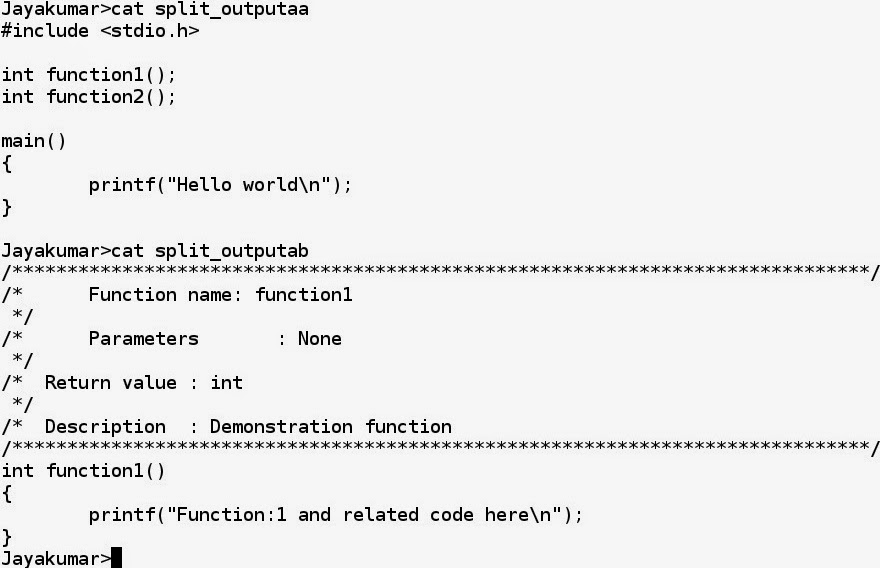Introduction
Often when we walk into car garage, one can observe that the mechanic having different type of spanners, screw drivers for fixing different set of problems. These are nothing but tools that makes life of the mechanic easier.
In the similar lines knowing different tools (ex: commands) and using it for their advantage can make life of a developer much easier. In this post let us have a look into Split command to organize C files.
Let us take example of the given file (Fig1, split_file.c), which has the obvious main function and two other functions i.e. function1 and function2. As the size of the file grows, file becomes bigger in size and the development may want to move some of the function implementation into other files and eventually compile them using make utility.

One way to split function1 and function2 into two different file is by using the split command. Here is a simple way to understand the split command to organize C files :
After executing the split command the command itself will split the output into targetfileaa, targetfileab etc, depending on the type of split. The “-b” or “-l” option talks about if the split to be based on bytes of lines of the file.
In our case since the main, function1 and function2 are having 10 lines each, we can apply a split based on the split as follows (Fig2: Applying split command)


In this way larger files can be split into smaller set of files, which come in handy during development. Such tools also help a developer to keep source files compact and split across, thereby helping in maintaining and enhancing them without much problem. For example if you have 5000+ lines of code in a single file, its high time to start dividing them into multiple times. Its time to start splitting! Click here to read about a different command known as Cut Command.